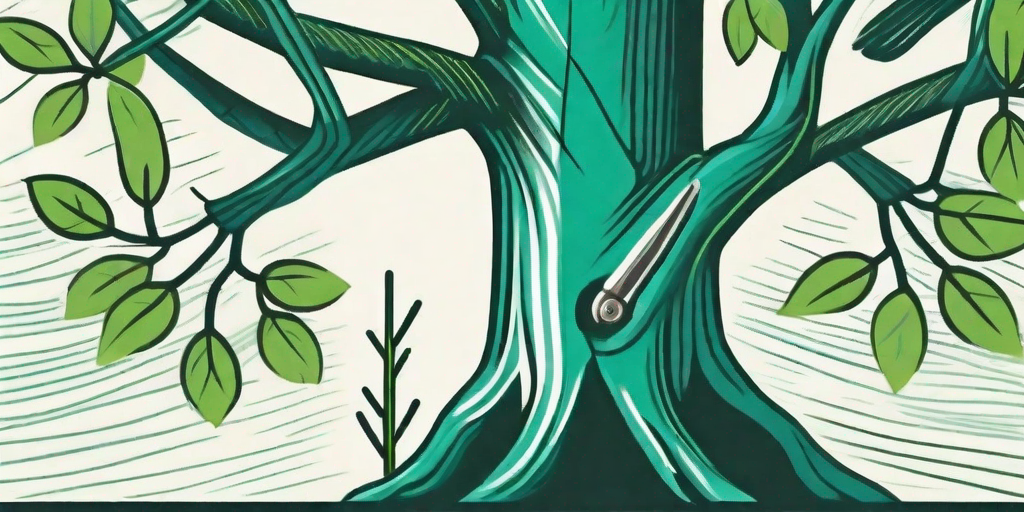
Ever looked at a willow tree and thought, "Wow, that's a lot of branches!"? You're not alone. These majestic trees can grow to impressive sizes, and with that growth comes the need for some serious pruning. But don't worry, with a little bit of knowledge and a dash of elbow grease, you can have your willow tree looking sharp and tidy in no time. Let's dive in!
The Why and When of Willow Tree Pruning
Before we get to the how, let's talk about the why and when. Pruning a willow tree isn't just about making it look good (although that's certainly a bonus). It's also about promoting healthy growth and preventing disease. And as for when to prune, timing is everything.
Pruning is best done in late winter or early spring, before the tree starts to bud. This is when the tree is in its dormant stage, which means it's less likely to experience stress or disease from the pruning process. Plus, without all those leaves in the way, it's easier to see what you're doing.
Why Prune a Willow Tree?
Pruning a willow tree helps to maintain its shape and promote healthy growth. By removing dead, diseased, or damaged branches, you're giving the rest of the tree a better chance to thrive. Plus, it can help to prevent the spread of disease and pests.
Pruning also allows you to control the size of the tree. Willow trees can grow quite large, and without regular pruning, they can quickly become unmanageable. So unless you're trying to recreate the Forbidden Forest from Harry Potter in your backyard, regular pruning is a good idea.
When to Prune a Willow Tree?
As mentioned earlier, the best time to prune a willow tree is in late winter or early spring, before the tree starts to bud. This is when the tree is in its dormant stage, which means it's less likely to experience stress or disease from the pruning process.
However, if you notice dead, diseased, or damaged branches at any time of year, it's a good idea to remove them as soon as possible to prevent the spread of disease and pests. Just remember to sanitize your pruning tools before and after use to prevent the spread of disease.
How to Prune a Willow Tree: A Step-by-Step Guide
Now that we've covered the why and when, let's get to the how. Pruning a willow tree might seem like a daunting task, but with the right tools and a little bit of patience, you can do it like a pro. Here's a step-by-step guide to get you started.
- Get the Right Tools: You'll need a pair of sharp pruning shears for smaller branches, a pruning saw for larger ones, and a ladder if the tree is tall. And don't forget your safety gear – gloves, safety glasses, and sturdy shoes are a must.
- Identify Which Branches to Prune: Look for dead, diseased, or damaged branches, as well as any that are growing inwards or crossing over other branches. These are the ones you'll want to remove.
- Make Your Cuts: Make your cuts at a 45-degree angle, about a quarter of an inch above a bud that is facing the outside of the tree. This encourages new growth to sprout in that direction.
- Clean Up: Once you're done pruning, be sure to clean up any debris to prevent the spread of disease and pests.
Remember, pruning is more art than science. Don't worry if your tree doesn't look perfect right away – it will fill in over time. The important thing is to promote healthy growth and prevent disease.
Common Mistakes to Avoid
Pruning a willow tree isn't rocket science, but there are a few common mistakes that can make the process more difficult and potentially harm the tree. Here's what to avoid.
- Over-pruning: Removing too much at once can stress the tree and stunt its growth. As a general rule, never remove more than 25% of the tree's branches at once.
- Incorrect cuts: Cuts should be made at a 45-degree angle, about a quarter of an inch above a bud. Cutting too close to the bud can damage it, while cutting too far away can leave a stub, which can lead to disease.
- Not sanitizing tools: Always sanitize your pruning tools before and after use to prevent the spread of disease.
Frequently Asked Questions
Can I prune a willow tree in the summer?
While it's best to prune in late winter or early spring, you can prune a willow tree in the summer if necessary. Just be aware that the tree may be more susceptible to disease and pests at this time.
How often should I prune my willow tree?
How often you should prune your willow tree depends on its size and health. As a general rule, it's a good idea to give it a good prune once a year in late winter or early spring. However, if you notice dead, diseased, or damaged branches at any time of year, remove them as soon as possible.
Can I prune a willow tree myself, or should I hire a professional?
If you're comfortable using pruning tools and the tree is small enough to safely reach all the branches, you can certainly prune a willow tree yourself. However, if the tree is large or you're not comfortable doing the job yourself, it's best to hire a professional.
Pruning a willow tree can be a rewarding task that helps to keep your tree healthy and looking its best. With a little bit of knowledge and the right tools, you can do it like a pro. Happy pruning!















